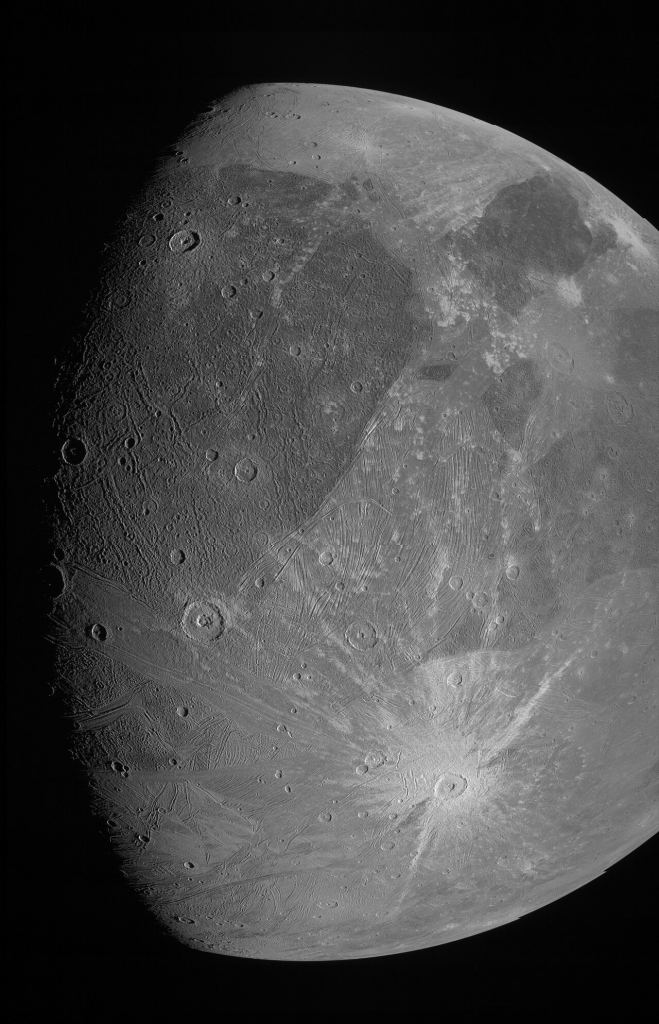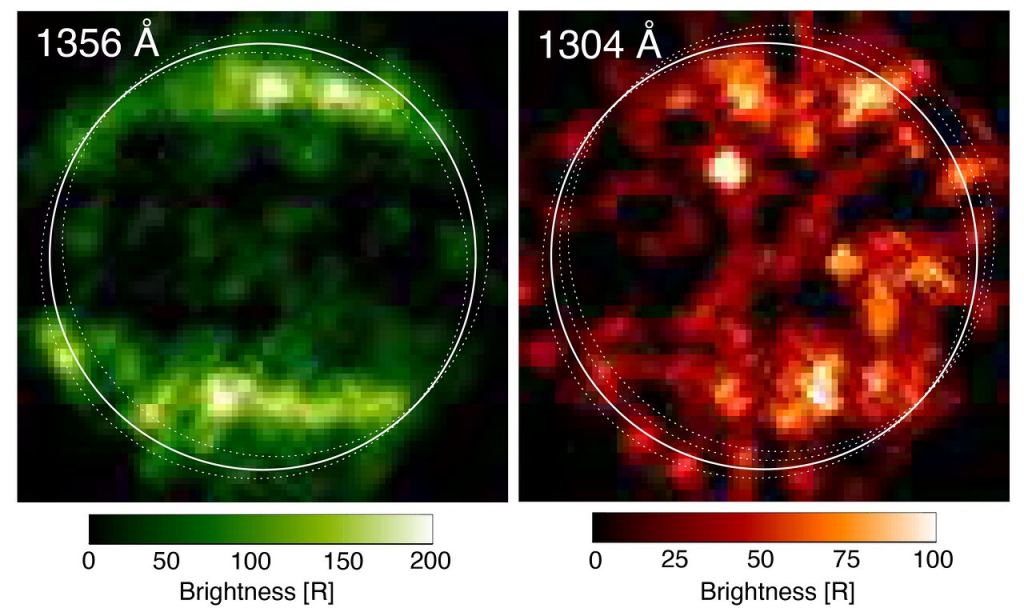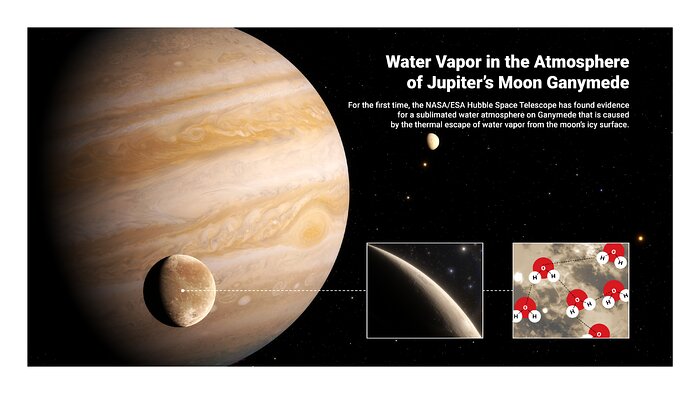Water Vapour has Been Discovered at Ganymede
By Andy Tomaswick
Ganymede has been getting alot of attention lately. It was the co-star of a video from Juno recently, and now scientists found something to make it an even more intriguing place visit – water vapor.
It has been well known for years that Ganymede harbors water, and lots of it. In fact, the ninth biggest object in our solar system might hold more water than all of the Earth’s oceans combined. However, scientists previously thought that most of it had been either frozen on the moon’s surface or was potentially trapped as a liquid under massive ice sheets.

Credit – NASA / JPL – Caltech / SwRI / MSSS
Most observations up to this point had confirmed that theory. But there was one that was a little bit off – two separate ultraviolet images that Hubble took of Ganymede back in 1998. Those, which can be seen as two different “colors” of ultraviolet light, gave scientists several insights. First, Ganymede had a magnetic field, which is similar to Earth’s in that there are auroral ovals around the moon’s poles. Second, there are molecules of O2 surrounding the planet, which accounted for other similarities between the two ultraviolet images. That also made sense, given that O2 can be stripped off the surface when a charged particle interacts with the ice there.
But there were some clear differences between the two images as well. Originally, scientists ascribed these differences to the presence of molecular oxygen in the atmosphere as well. Its absorption band could have accounted for the difference in reflection at the ultraviolet wavelengths Hubble used.

Credit – NASA / ESA / L. Roth
The mystery was considered solved – until scientists began collecting additional data on Ganymede in preparation for Juno’s recent visit. In 2018, researchers used Hubble’s Cosmic Origins Spectrograph to look for elemental oxygen on Ganymede. To their surprise, they hardly found any.
Which begs the question – what could have been causing those differences in the original ultraviolet images taken by Hubble 20 years before? It turns out water vapor could cause such a difference – and the location of those differences would be exactly where water vapor would be if it was outgassing on the moon’s equator.
Credit – NASA Goddard YouTube Channel
Direct sunlight is a powerful force, even for objects as far away as Ganymede. It is possible that, at noon, around the equator, on days where it is close to the sun, it gets warm enough on Ganymede to actually sublimate some of its ice, releasing water vapor into the moon’s atmosphere.
Extraordinary claims require extraordinary evidence, however, and so far this claim is based on only circumstantial evidence that fit nicely into the current crop of data. Luckily, more data is forthcoming, with the arrival of ESA’s Jupiter Icy Moons Explorer (JUICE) in 2029. It will focus heavily on Ganymede, given its potential as a habitable world, and should be able to confirm once and for all if there is actually water vapor in the moon’s atmosphere.

Credit – ESA / Hubble. J. daSilva
Either way, this is another exciting possibility that could go on to show there are other habitable worlds in our own solar system. The only way we will truly know is to go there and find out.
Learn More:
ESA – Hubble Finds First Evidence of Water Vapour at Jupiter’s Moon Ganymede
Nature Astronomy – A sublimated water atmosphere on Ganymede detected from Hubble Space Telescope observations
CNN – Hubble finds water vapor around Jupiter’s moon Ganymede
NASA – Hubble Finds First Evidence of Water Vapor at Jupiter’s Moon Ganymede
Lead Image:
Image of Ganymede from Hubble in 1996
Credit – ESA / Hubble, NASA, J. Spencer
The post Water Vapour has Been Discovered at Ganymede appeared first on Universe Today.

July 28, 2021 at 06:05PM
via Universe Today read more...

Post a Comment